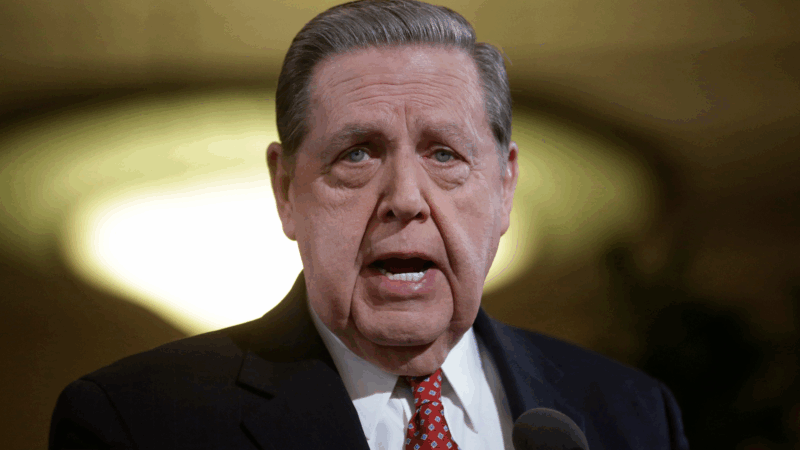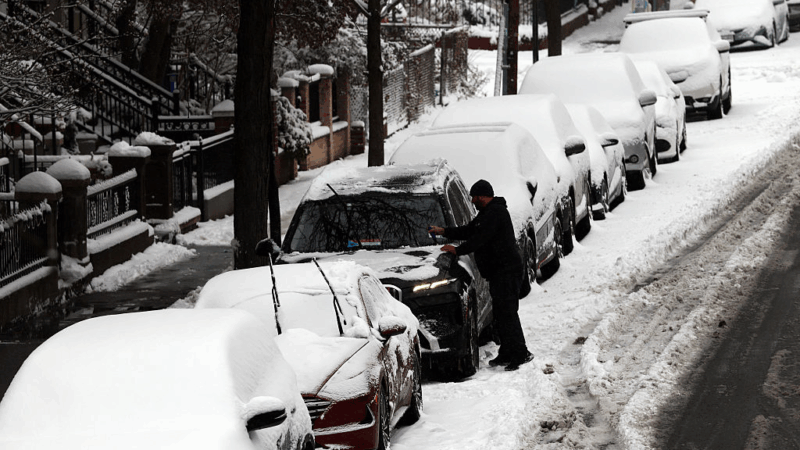How the beloved state fair grew from livestock showcases to cornucopias of amusement
There’s something for everyone at a state fair — petting zoos, live music, fried foods.
For many states in the U.S., summer to fall is the season for the annual state fair. The country’s first state fair dates to the 19th century, when locals would showcase livestock, crafts and agriculture.
State fairs of today share the same elements, but have evolved into something like pop-up theme parks. They remain a favorite American pastime, contributing $30 billion to the U.S. economy each year, said David Grindle, CEO of the International Association of Fairs & Expositions.
Here’s a look at how state fairs began, and what keeps them going year after year.
The state fair’s agricultural roots remain
State fairs began as agricultural competitions, which the British brought with them as they colonized North America, said Nick Pirro, who the New York State Fair has deemed its unofficial resident historian. (He’s officially their graphic designer and website manager.) They served as spaces where farmers could show off their livestock and inform the public, according to the UK’s House of Commons.
Once the colonies began developing governments and counties, county fairs took off. Then those counties grew into states, and people eventually developed an appetite for something more grandiose, Pirro said.
Thus, in 1841, the state fair was born. The first one was held in Syracuse, N.Y. There were plowing competitions and animal exhibits — not far off from what you would see at a fair today. Other areas that weren’t yet states followed New York, including what is now Minnesota and Iowa, Pirro said.
“It grew because, as you got more and more county fairs, [it’s] our natural desire as humans to show off and be competitive,” Grindle said.
Now, fair contestants show off all kinds of things — flowers, outfits and cakes — in play for those coveted ribbons. But agriculture is still everywhere at fairs. It’s a common thread in the food and drinks offered, the jobs supported and the crops flaunted, Pirro said.
“The driving force is agriculture,” Pirro said.
Showcasing arts and crafts
Crafts have an early presence at state fairs, too. But back then, displays and demonstrations were a matter of function. They were useful for determining things like the types of wool a sheep might produce, or showing off the latest manufacturing or blacksmith techniques, said Mary Savig, the curator-in-charge of the Smithsonian’s Renwick Gallery, an arm of the American Art Museum in Washington, D.C. One of the gallery’s current exhibits is “State Fairs: Growing American Craft.”
Demonstrations are still present. But today, the menagerie serves many purposes — educating, entertaining, and showcasing local artists, talent and trends.
For example, in the 19th century, Victorian hair wreaths (made from human hair) were all the rage throughout the country, said Savig. She traveled to various state fairs to curate the Renwick exhibit. She said more recently, “diamond” art has become popular, in which people make portraits, or recreate famous artworks out of crystals.
And as a tongue-in-cheek homage to fair food, some crafters have begun constructing quilts-on-a-stick at the Minnesota State Fair, for example. They’re mini quilts about the size of a sheet of printer paper that artists poke skewers through.
“It’s a pretty small project and it’s very accessible to people, especially new quilters,” Savig said.
In Mississippi, the Choctaw Indian Princess is crowned each year at the Choctaw Indian Fair, in which the contestants often make their own garments with elaborate beading and embroidery work. In Minnesota, there are contests for rosemaling, a Norwegian folk art, which is characterized by intricate patterns of flowers and swirls.
Some of these works have made their way to the nation’s capital for the Renwick Gallery’s exhibit, which runs through next year. The works include a cow made out of 700 pounds of butter, which will sit in a custom, 38 degrees Fahrenheit case.

“On artists, [fairs] have had historically, a really important impact, just as far as validating an artist’s skills, also giving them a platform to show their work and be recognized,” Savig said. “I think it’s encouraged a lot of artists to continue their work in various ways.”
Fried foods and music stars came later
Food and entertainment has certainly taken off, as neither were common at early fairs. There was no electricity back then.
“Once the fair ended for the day, it’s like, ‘What are these people going to do?’ So they had to occupy themselves,” Pirro said.
That usually meant going to taverns and bars, and enduring long travel days by horse and buggy. New York fairgoers eventually grew tired of this, Pirro said. So the Ka-Noo-No Karnival debuted in Syracuse in 1905 – alongside the state fair – as a way to keep people in town. It was a parade that had string lights lining the floats’ path, allowing attendees to get a peek at the new wonders of electricity, Pirro said.
Now? “We can keep the lights on…and keep them well-fed with anything and everything that you can deep fry nowadays,” he said.
There are fried Oreos, Snickers and pickles. French fries and funnel cakes. The largest bagel Guinness World Records has on file (868 pounds) was shown at the New York State Fair in 2004. You can also get turkey legs the size of your forearm — plenty to chow down on while taking in crowd-favorites, from pigs racing, to future megastars like Taylor Swift, who first performed at the New York State Fair in 2007.
The beauty of the state fair, Grindle says, is that no two are alike.
“If you’ve been to one fair, you’ve been to one,” Grindle said. “They are all so beautifully unique. They are so reflective of the things going on in their communities that I really encourage people to get out and explore them to see what’s going on and ask questions.”
Jeffrey R. Holland, next in line to lead Church of Jesus Christ of Latter-day Saints, dies at 85
Jeffrey R. Holland led the Quorum of the Twelve Apostles, a key governing body. He was next in line to become the church's president.
Winter storm brings heavy snow and ice to busy holiday travel weekend
A powerful winter storm is impacting parts of the U.S. with major snowfall, ice, and below zero wind chills. The conditions are disrupting holiday travel and could last through next week.
Disability rights advocate Bob Kafka dead at 79
Bob Kafka was an organizer with ADAPT (American Disabled for Attendant Programs Today), a group which advocates for policy change to support people with disabilities.
‘It’s behind you!’ How Britain goes wild for pantomimes during the holidays
Pantomimes are plays based on a well-known story — often a fairy tale — which are given a bawdy twist. The audience is expected to join in throughout, shouting as loudly as they can.
Kennedy Center vows to sue musician who canceled performance over Trump name change
The Kennedy Center is planning legal action after jazz musician Chuck Redd canceled an annual holiday concert. Redd pulled out after President Trump's name appeared on the building.
Our top global photo stories from 2025: Fearless women, solo polar bear, healing soups
These stunning photos include a polar bear in a Chinese zoo, a teen in Zambia facing an uncertain future, Mongolian kids watching TV in a tent, a chef prepping a bowl of good-for-you soup.







